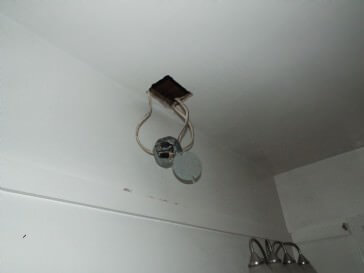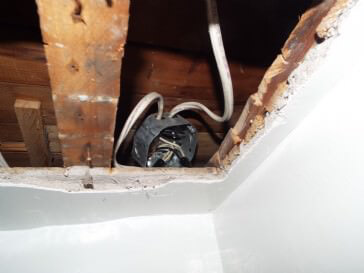What to do when your household wiring is suspicious?
 12/1/2014 at 2:06:26 PM
12/1/2014 at 2:06:26 PM
I recently discovered that my house (Circa 1942) contains cloth type copper wiring in certain locations and it seems that the insulation is beginning to disintegrate. Although the panel is a breaker type (100 amp service) and all the connections to the panel seem to be the more modern NM type grounded wire.
My concern is that over the life of the house certain portions have been upgraded or added (probably DIY by the look of it!) and the original wiring remains buried, some receptacles are grounded, others are not.
I wonder where all those connections are? Also if the one box in the ceiling that I looked at is representative of the remainder of the house then it is probably best to let a professional take a look. I am guessing now that the safest course of action would be to update the electrical system as a whole.
I am asking on this site as I appreciated the professional straight forward response from the sites contributors, pleasing to see in the day and age. Any guidance would be much appreciated.
 12/1/2014 at 6:36:06 PM
12/1/2014 at 6:36:06 PM
Where to begin....
Well the easiest thing to cover is probably a lot of DIY work has been done over the years. You can start by calling the ESA and asking if any permits have been taken out on your address is the best idea to get started.
The braided wire you are speaking about was common around those dates, some probably knob and tube, some mixed after that.
Best thing to do is to pay a licensed electrical contractor to go in and spend a few hours giving you an honest evaluation.
ESA can also do an inspection but they don't do a thorough job like a contractor would (not a friend of a friend who is an electrician). Some of these electricians may be simply industrial or commercial trained and don't have the years of background to identify what was going on within the walls of a residential building. Where they may know the simplicity of the circuitry, it is the unknown and troubleshooting that may cause false repairs. So be cautious and don't skimp on the electrical in a 100 year old wooden structure, a few sparks within a wall will certainly destroy your home.
Our code changes every few years and updates are monthly on new items and problem areas so only a Master Electrician or Licensed contractor would be recommended to help with the inspection.
 12/1/2014 at 9:47:43 PM
12/1/2014 at 9:47:43 PM
Robert, definitely has the correct advice. I've ran into the exact wiring you describe with cloth outer coating and a brittle plastic coating on each conductor. When you try to pull the wire out of the box, the insulation cracks furthur torwards the box clamps. I've had to try and pull more protected cable through the box (where possible), strip more of the jacket to find good insulated conductors, tape them to prevent them from cracking furthur, then marrett them. This is just a way to safely finish your job when you run into this situation then show the customer that their wiring is beginning to dangerously deteriorate.
Obviously the best course of action is to replace all that type of wiring in the house since most if not all conductors exposed to oxygen, meaning the outer jacket has been peeled back exposing the individuals conductors/wires to air, have cracked, deteriorated insulation and are prone to shorts or dangerous arcing.
I don't believe spending money on an ESA general inspection is going to be usefull at this point, they only point out obvious defects and those defects would be listed in any reputable electrical contractors report upon a thourough inspection. I did end up replacing most of the wiring but not all, since she did have a budget and could only afford to do the most damaged areas, we just had to prioritize unfortunately.
 12/3/2014 at 10:28:52 PM
12/3/2014 at 10:28:52 PM
Hi Chris
The worst place for most of this stuff is in the kitchen lights... traditionally people have put in over-wattage fixtures and lamps and that old wiring was only good for 60*C - a formula for crispy wires for sure.
The junctions hopefully are in boxes in the attic or crawl space. I was just in a century home in Hamilton and I had to cut two buried junction boxes out of the bathroom ceiling (picture attached). While the wire was newer, the connection were poor and the installation failed.
While your situation is slightly different, you should be aware that there is a mix of old and new wiring and those connections are "somewhere"...
Cheers
John
John Kuehnl-Cadwell
Master Electrician
Datawise Solutions Inc


Search the TrustedPros directory and discover the best contractors in your area.
Find your home service pro

